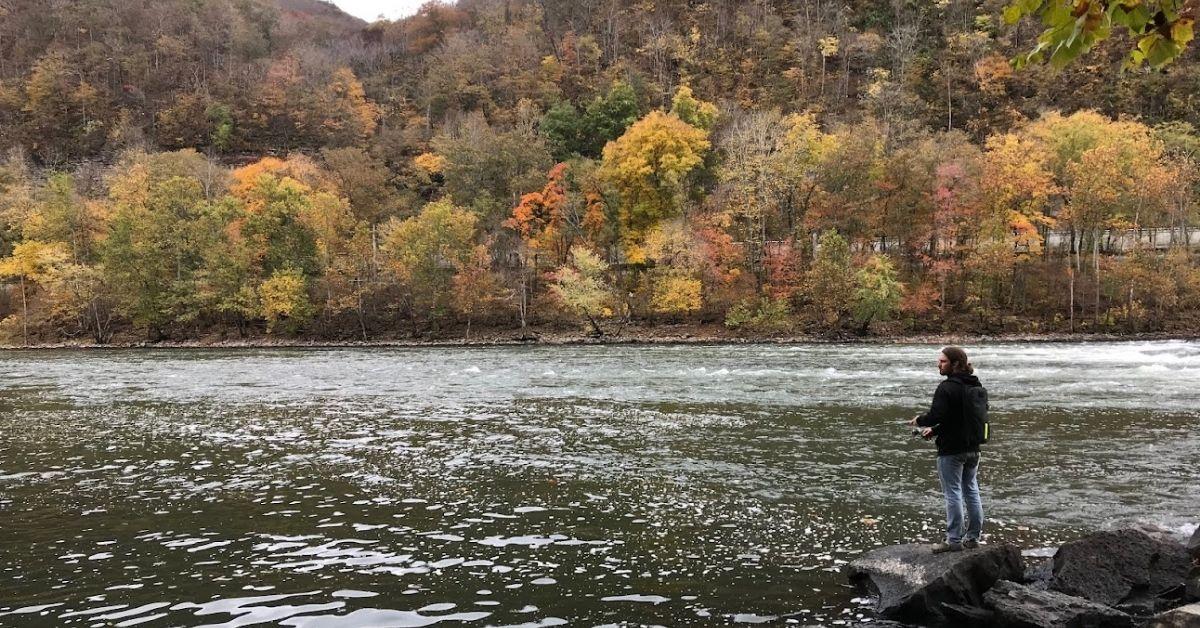15 Basic Bass Fishing Tips For Fishing The Fall Transition
Creeks in reservoirs provide a year-round home for some fish, but these tributaries mainly serve as highways for both baitfish and bass during two specific seasons: The spring and the fall transition. In the spring bass migrate from the main lake into the warming waters of the creeks in search of an ideal spawning bank. During autumn baitfish on the main lake move into the cooling waters of the creeks where bass follow to engage in a feeding spree that can last for a couple of months.
Constantly changing weather conditions and the lake turnover contribute to sporadic fishing in the fall transition, but you can score consistently during this time by locating creek bass. Here are 15 fishing tips for locating and catching transition bass migrating along creek channels in the fall on highland and lowland reservoirs.
- When the water temperature drops below 70 degrees, bass start following baitfish from the mouth of the creek to larger rock banks or any wood cover on secondary points where the fish suspend over depths of 25 to 35 feet.
- The pattern will change from day to day with bass either on rocks or wood. Try points with standing timber or brush piles and if that fails to produce switch to rock ledges or boulders on points close to the creek channel break.
- As the water temperature drops into the lower 60s, bass make a move out of the creek channel to the 8- to 10-foot depth range either on the secondary points or in the back of the creek. When the bait moves up to the shallows, the bass will also move up with the forage.
- Drawdown on lakes and reservoirs causes shallow areas to shrink in the backs of creeks during the fall, so try to key on whatever wood cover is left in the water.
- If the water cools down rapidly in the fall, highland lakes bass never make the venture to the backs of the creeks. These fish will congregate near channel swings where the banks are mixed with chunk rock and pea gravel.
- Channel swings become primary staging areas when bass start moving back to the main lake in late fall. Target any transition spot where the shoreline changes from ledges to smaller rock or mixed chunk-pea gravel banks for late fall bass.
- Bass move into shallower water for a longer time on lowland reservoirs in the fall transition. Early in the fall bass will be along the creek channel but there will also be bass up in thin water because shad are in the shallows. Bass can be taken from any structure in the shallow creeks from depths of 5 feet or less throughout most of the fall.
- As the weather cools and the water temperature drops, bass holding in standing timber along the creek channel move up shallow onto secondary points and flats. The large expanses of shallows in lowland reservoir creeks allow bass to move back and forth from deep to skinny water throughout a fall day.
- Weather affects the movement of fall transition bass as wind and clouds tend to lure baitfish and bass to the shallows, while calm sunny conditions drive the fish back to standing timber along the channel drops. Start fishing shallow and if you are not catching bass there work your way out to deeper water and fish for suspended bass then.
- Flats on lowland reservoir creeks can stretch for hundreds of yards, so finding bass in these vast areas requires some scouting. Dissect the flat for subtle little places that are going to hold fish such as a tree row coming out along a flat.
- Subtle features to search for bass along flats include adjacent channel swings, fence rows, ditches or small creeks flowing into the flat.
- Prime locations for finding bass on vast flats are any areas of the flat that forms into a point or any hump near the creek channel.
- Scattered bass can be found in the shallows of the flats in early fall, but by the middle of autumn large concentrations of bass move into these areas to gorge on baitfish. You can catch these marauding bass in water 3 feet deep or less.
- The cooler water in mid-autumn to fall transition and the start of the lake’s turnover attract bass to the backs of the creeks. Target shallow wood cover for bass in this situation because the bigger fish are going to relate to key pieces of cover such as laydown logs.
- By late fall the majority of bass have pulled out of the back end or off the flats and start relating to channel structure such as bluff points, channel swings or the main lake points at the mouth of the creek.
Updated September 5th, 2024 at 11:05 AM CT


